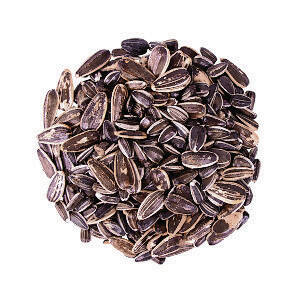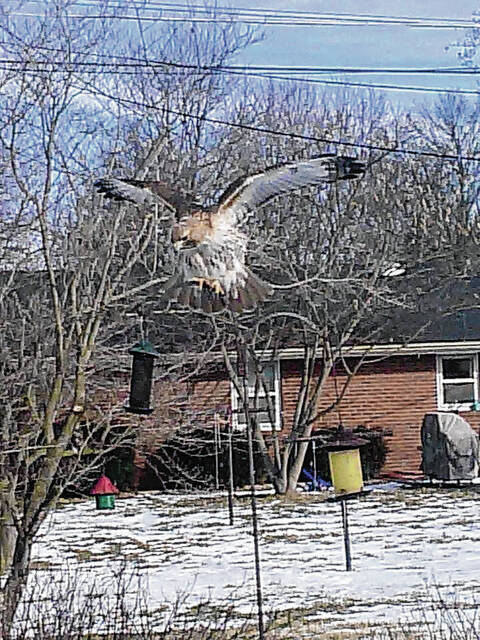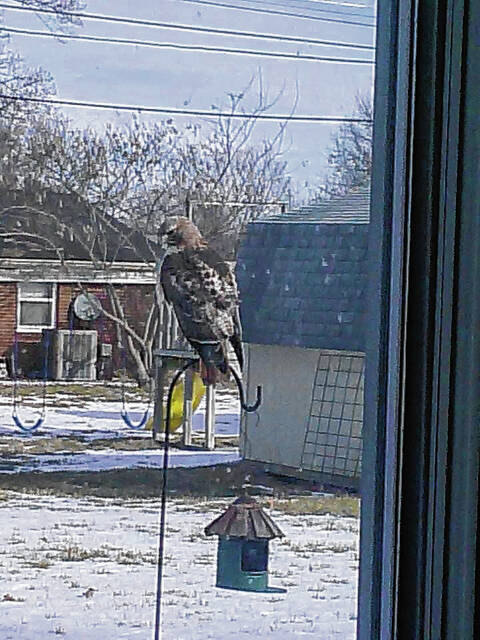Bird watching and feeding has been and still is one of the best ways to enjoy nature and wildlife right outside your window.
Some bird species don’t migrate during the colder months, so those backyard birds benefit from access to bird feeders, according to humanesociety.org.
When scarce food sources are covered in snow, bird feeders provide an important and easily accessible food supply for winter birds.
On Feb. 23, 1994, Congressman John Porter from Illinois proclaimed February as National Bird Feeding Month by reading a resolution into the Congressional Record, according to audubonpark.com.
“Mr. Speaker, I would like to recognize February, one of the most difficult months in the United States for wild birds, as National Bird Feeding Month,” Porter said. “During this month, individuals are encouraged to provide food, water and shelter to help wild birds survive.”
He said backyard bird feeding is an entertaining, educational and inexpensive pastime enjoyed by children and adults.
Whether one is experienced at bird feeding or a novice, February seems to be the ideal time to feed the birds in your neighborhood.
Donna Stanley, park ranger at Muscatatuck National Wildlife Refuge in Seymour, said they have bird feeders in a bird room at the refuge visitor center where visitors can sit and watch birds up close.
“Our Friends group pays for the birdseed, and the feeders are very popular with visitors,” Stanley said. “Unfortunately, our visitor center has been closed since COVID hit, and we have discontinued the feeding until the visitors can return.”
Stanley said the native birds can find plenty of food around the refuge, but birds also enjoy easy-to-find handouts, so the feeders are there only as an educational resource.
“The most common question about bird feeding from people who live in town is how to avoid feeding house sparrows and starlings (which mob feeders and take all the seed from other birds),” she said. “The easiest way to do that is to avoid feeding corn or millet and to feed black oil sunflower seed, which the sparrows don’t like as well.”
The Cornell Laboratory of Ornithology is a nonprofit organization dedicated to bird conservation, education and research.
According to birds.cornell.edu/home, during spring and summer, most songbirds eat insects and spiders, which are highly nutritious and abundant, but during fall and winter, nonmigratory songbirds shift their diets to fruits and seeds to survive.
In May 2021, the Department of Natural Resources started receiving reports of sick and dying birds from Monroe County. Then by early summer, DNR biologists had identified more than 750 possible cases in 76 Indiana counties involving a very specific set of clinical signs: Crusty eyes, eye discharge and/or neurological issues.
The DNR then recommended a statewide moratorium on bird feeding to slow the spread of the undetermined illness, which affected several species, including the American robin, blue jay, brown-headed cowbird, common grackle, European starling, various species of sparrows and finches and the Northern cardinal.
In early September, biologists determined bird deaths associated with the disease outbreak had significantly declined, and by mid-September, all Indiana counties received the green light to start feeding birds again.
The USGS National Wildlife Health Center’s avian disease experts and other scientists are continuing their investigative work on the unidentified cause of the bird deaths.
Seymour resident Diane Vance said she has fed birds for several years because she loves seeing them feed just outside her window.
“Last spring when we were told to stop feeding them because of birds dying without explanation, I did quit,” Vance said. “When the all-clear was given to put out the feeders once more, I did. Trouble is now, the birds aren’t interested in eating from them.”
She said she’s going to wash out all of her feeders again and pour out the old seed she has and start all fresh again and hopes they return like they once did.
Kristal Hubbard, also of Seymour, said she uses a feeder all year, and as long as the chute where they get their food is clear, they will come and eat.
Freetown resident Sara Martin said feeding birds is one of her favorite things to do.
“I bought bird feeders so my cats could watch the birds from the house, but it has been so fun seeing all the different birds,” Martin said. “I bought a bird book so I can identify them. I now have four bird feeders set up around our yard.”
She said getting the birds to show up wasn’t hard, but she learned they are picky about what kind of seed they eat and they seem to like lots of sunflower seeds and nuts.
Covington native Wade Kammin with Wild Birds Unlimited in Springfield, Illinois, said for those who are interested in getting into bird feeding, he suggests starting with a foundational or all-purpose feeder, which will attract a wide variety of birds.
“That way, you can see what types of birds might be in your neighborhood and what’s coming in,” Kammin said. “Then you can go from there to see if you might want to branch out into some specialty feeders, and by putting specific foods in those feeders, you can narrow it down even more as to what’s coming in.”
He said the food that goes into the feeder makes all of the difference in the world, and bird seed containing milo, wheat and oats should be avoided because they are just fillers and the birds have to pick through them to get to the good seeds, so it’s messy and wasteful.
“If we use good bird seed from the start with sunflower and safflower seeds, peanuts and other things that are high in fat and protein, that’s what is good for the birds,” he said. “That will give them the most nutrition, not only through the winter months but as you move into spring and summer when they are raising their babies.”
Kammin said to clean bird feeders, first use dish soap, hot water and a brush. Let the feeder soak for a few minutes in a bucket or utility sink and scrub it thoroughly. Follow that with a mild bleach water rinse or soak to disinfect it, then rinse the feeder.
The DNR recommends all bird feeders be cleaned at least once every two weeks with a 10% bleach solution and rinsed thoroughly. Hummingbird feeders should be cleaned at least once a week.
More than 52 million Americans feed wild birds or other wildlife around their homes. More than 80% said they feed birds because they want to bring nature and beauty to their area or hope to enjoy the sound of birds in their yard.






